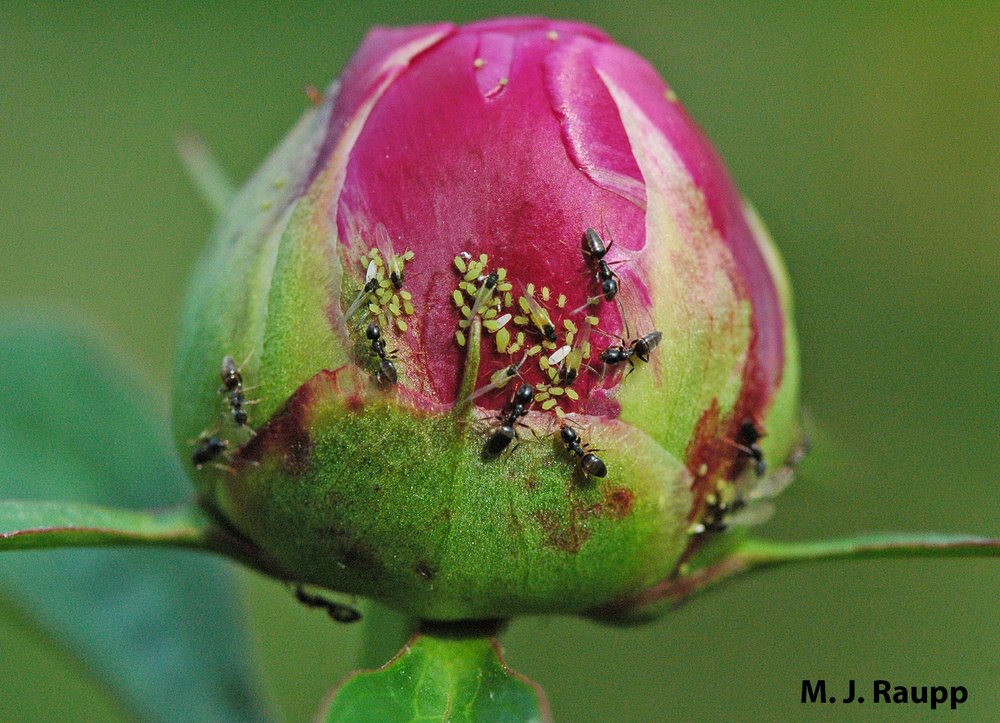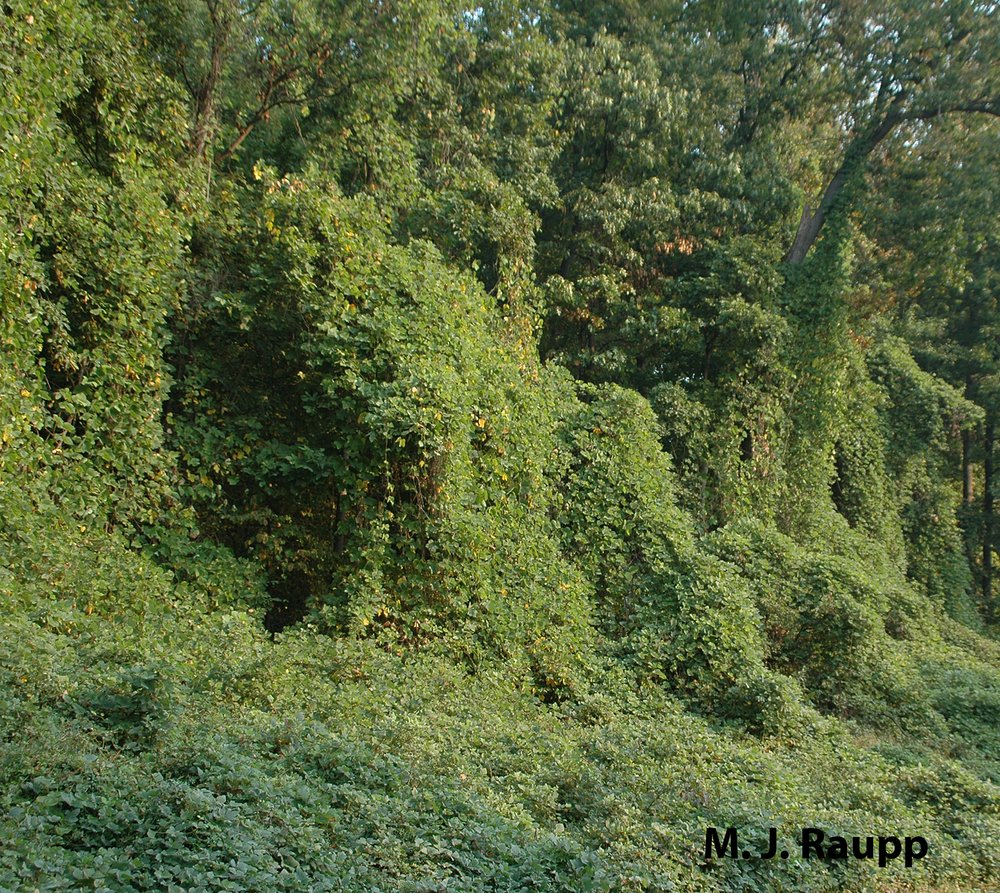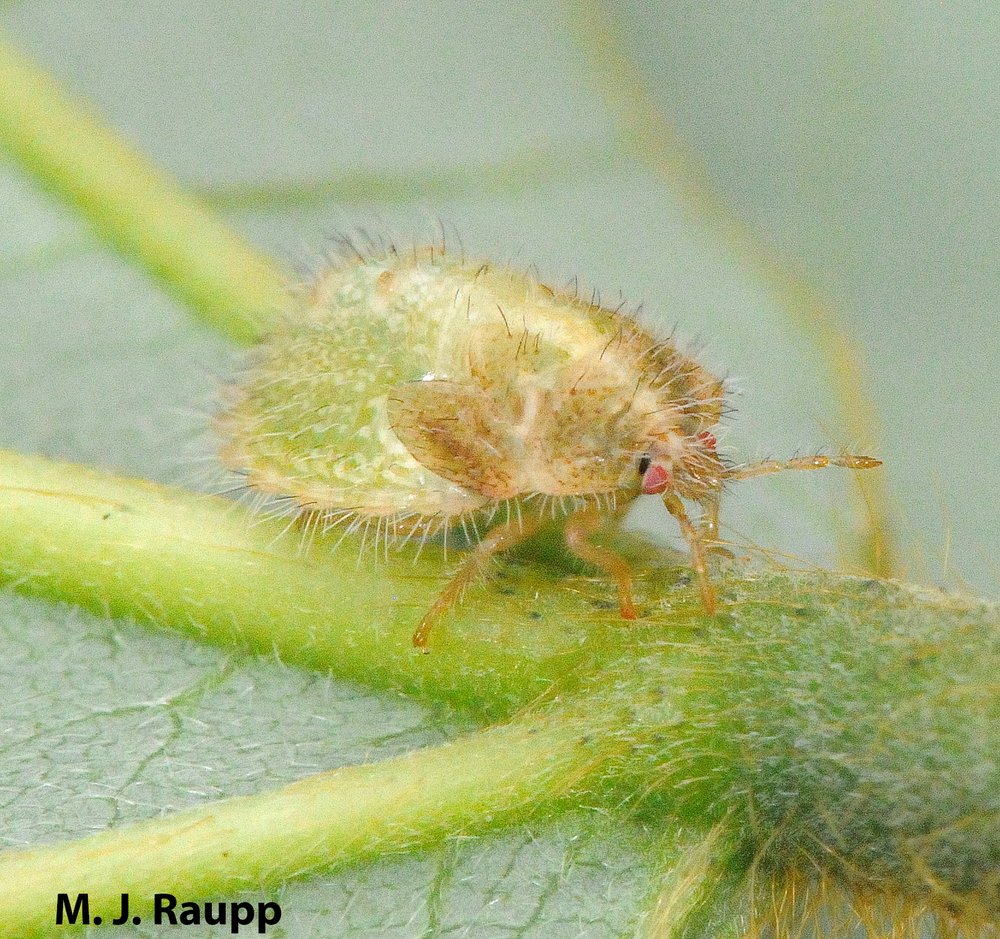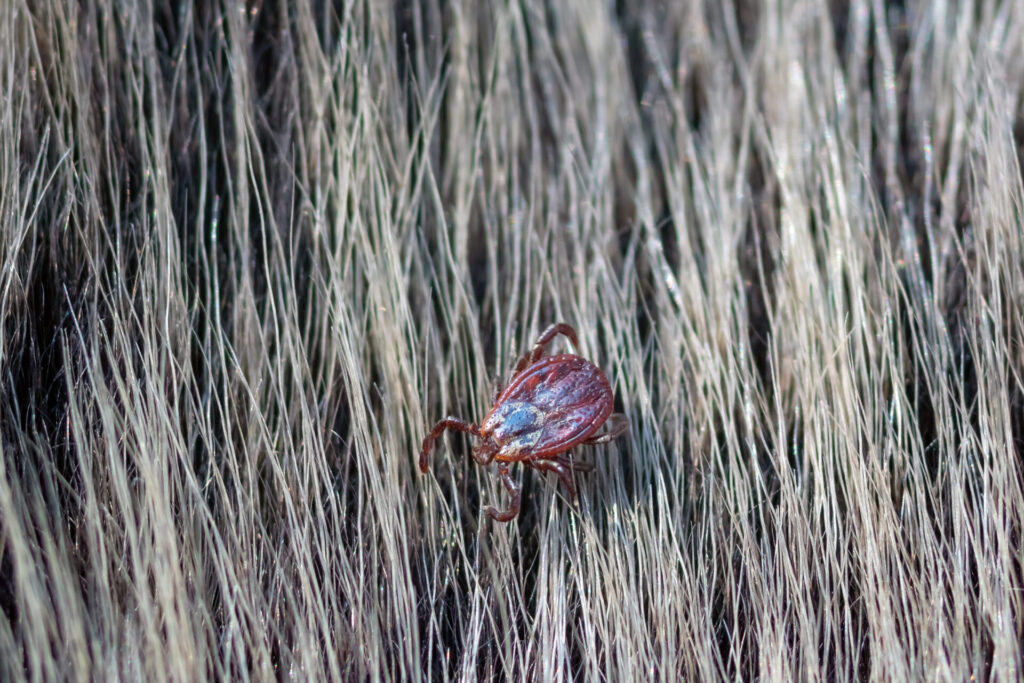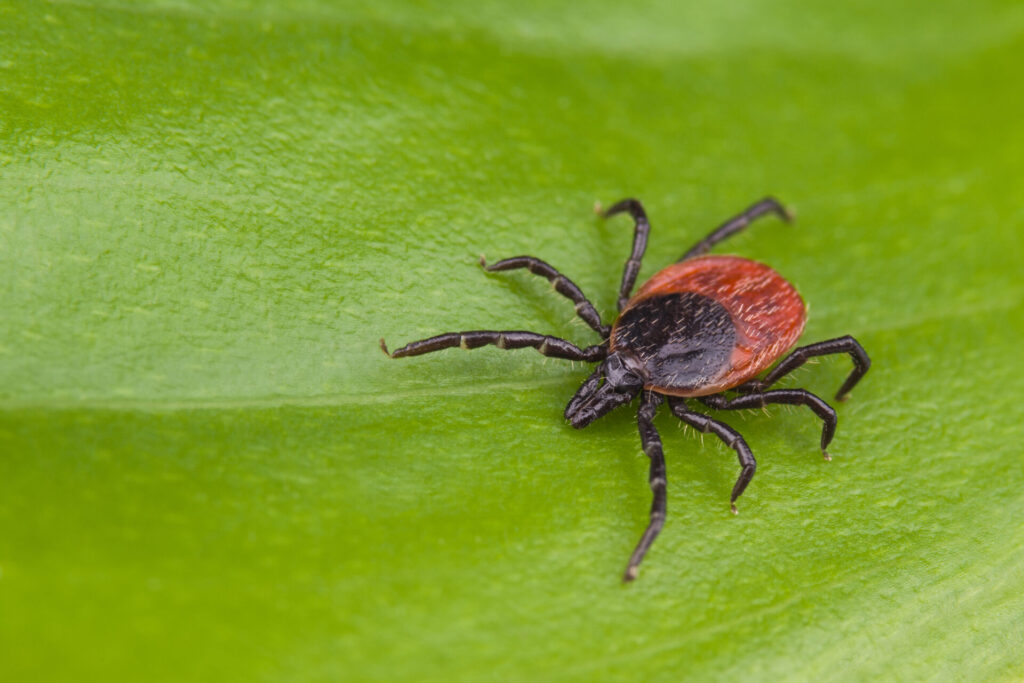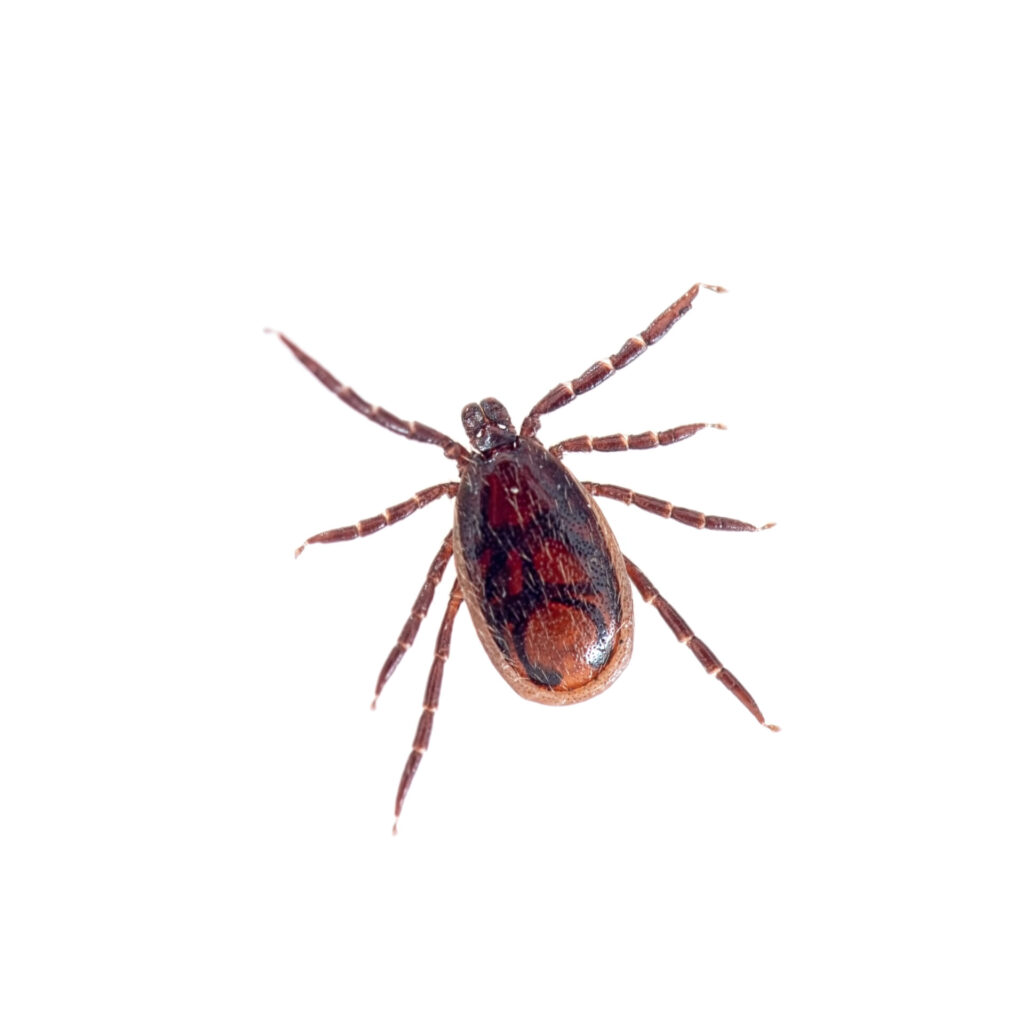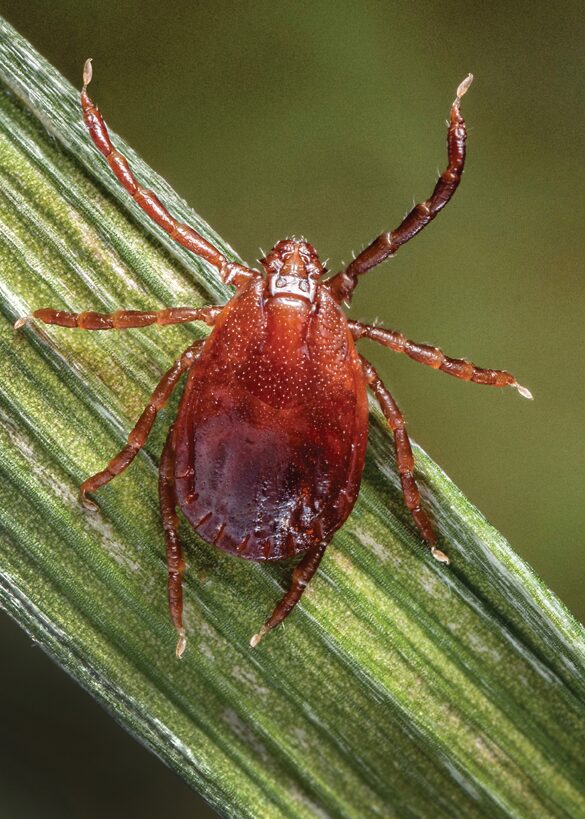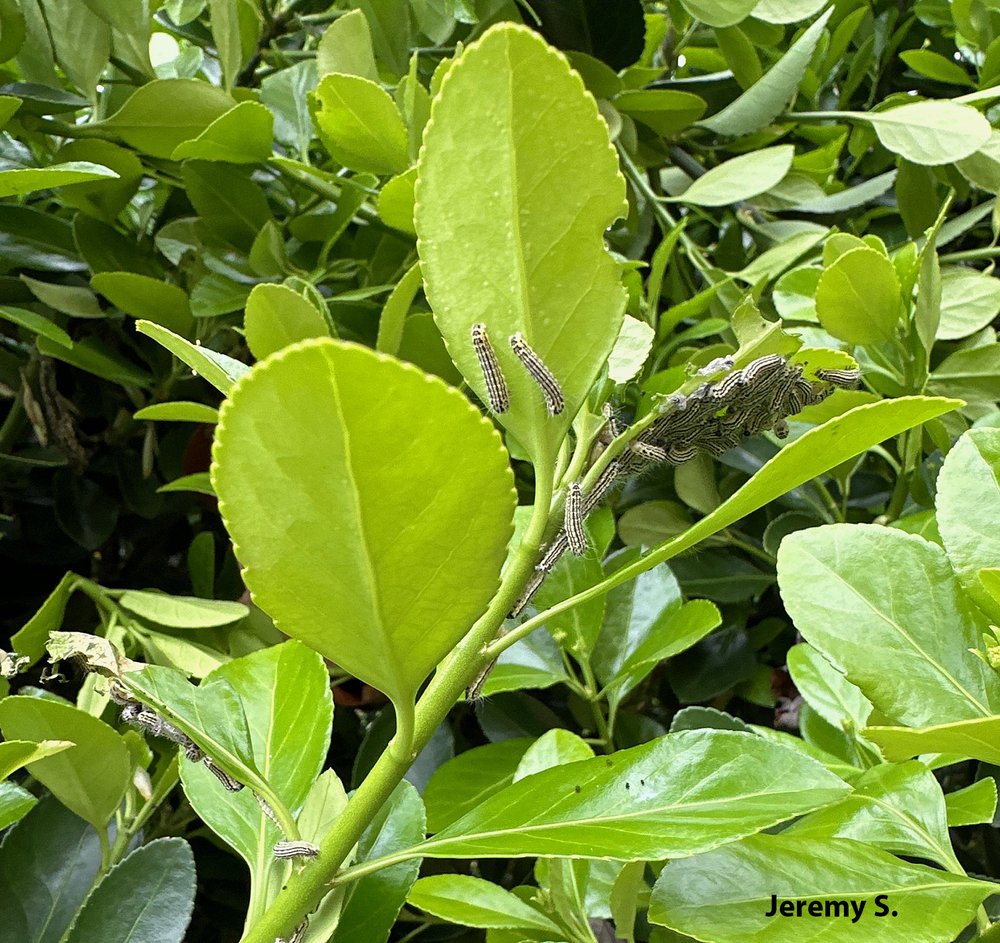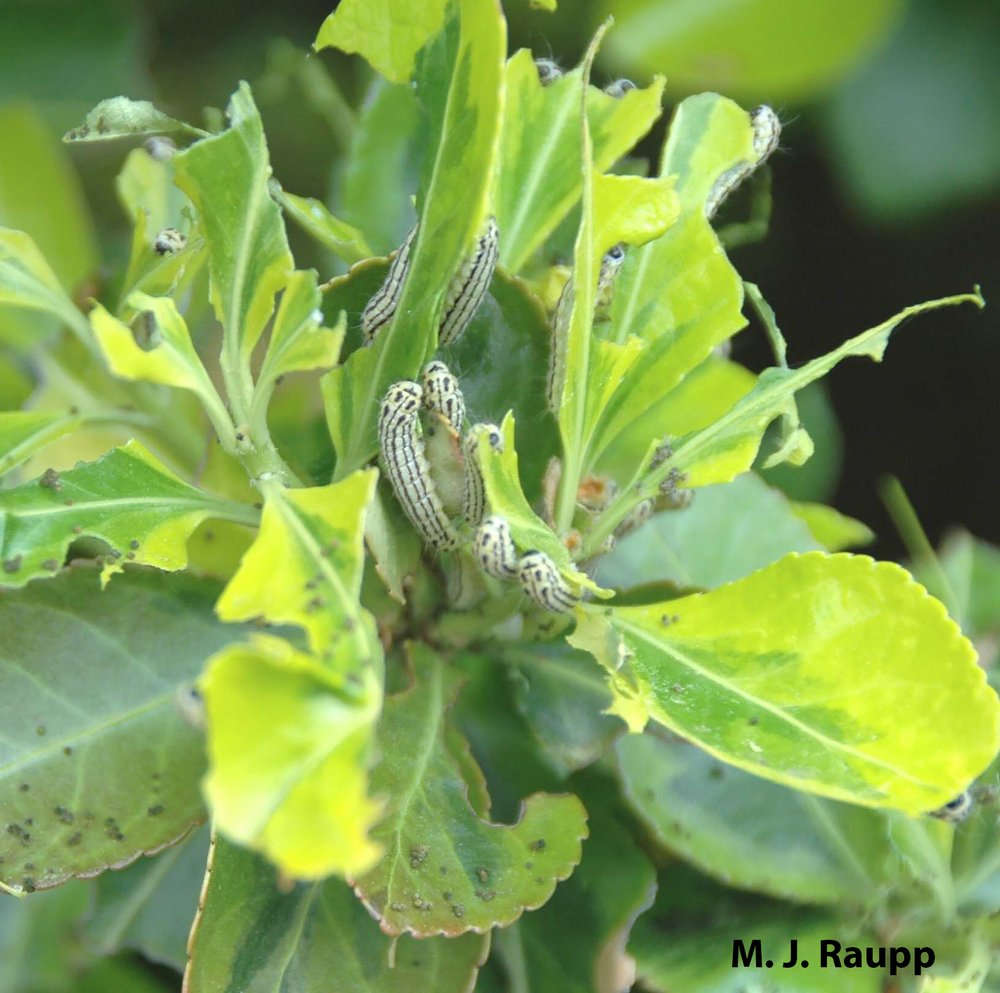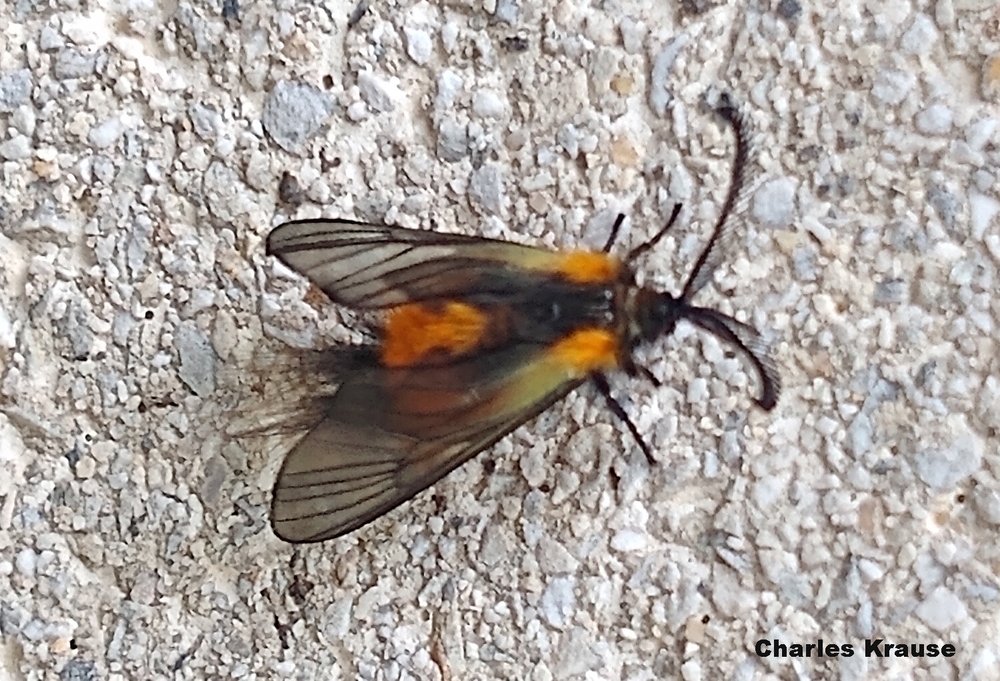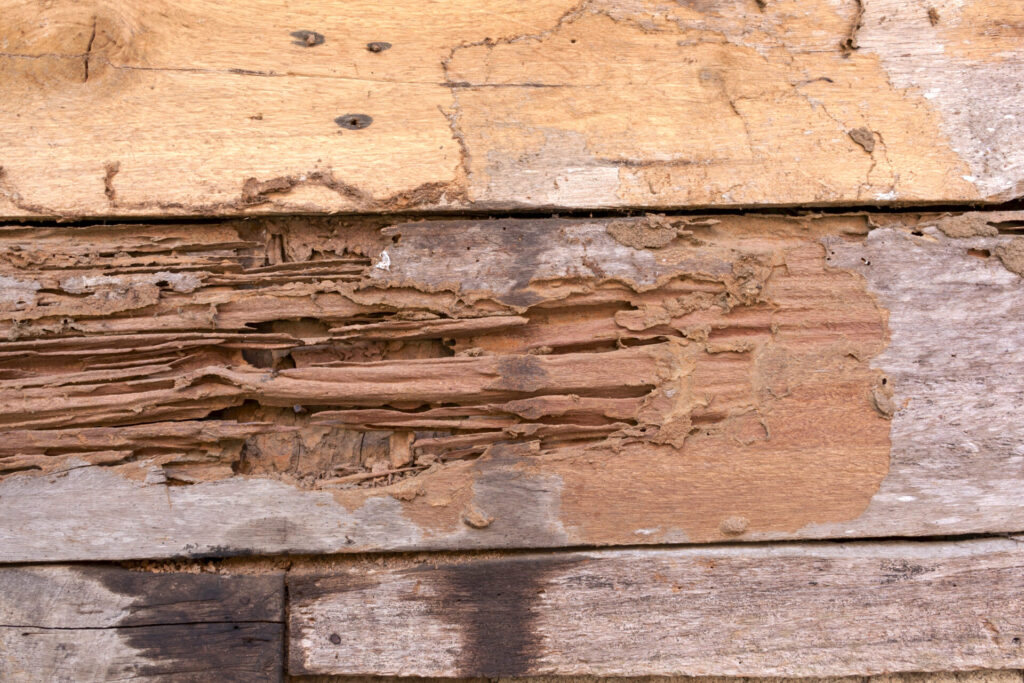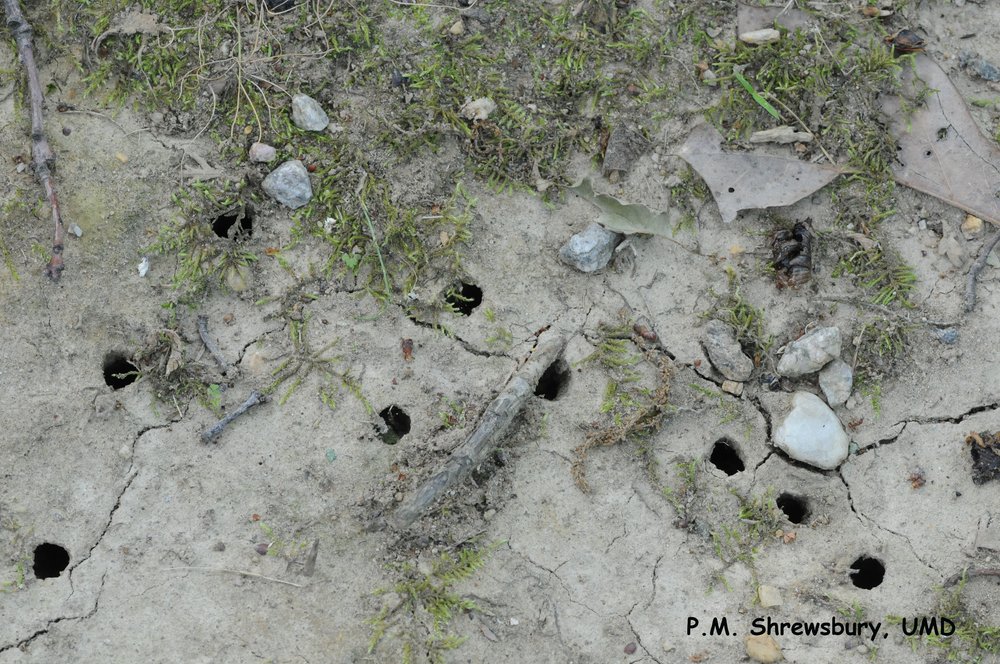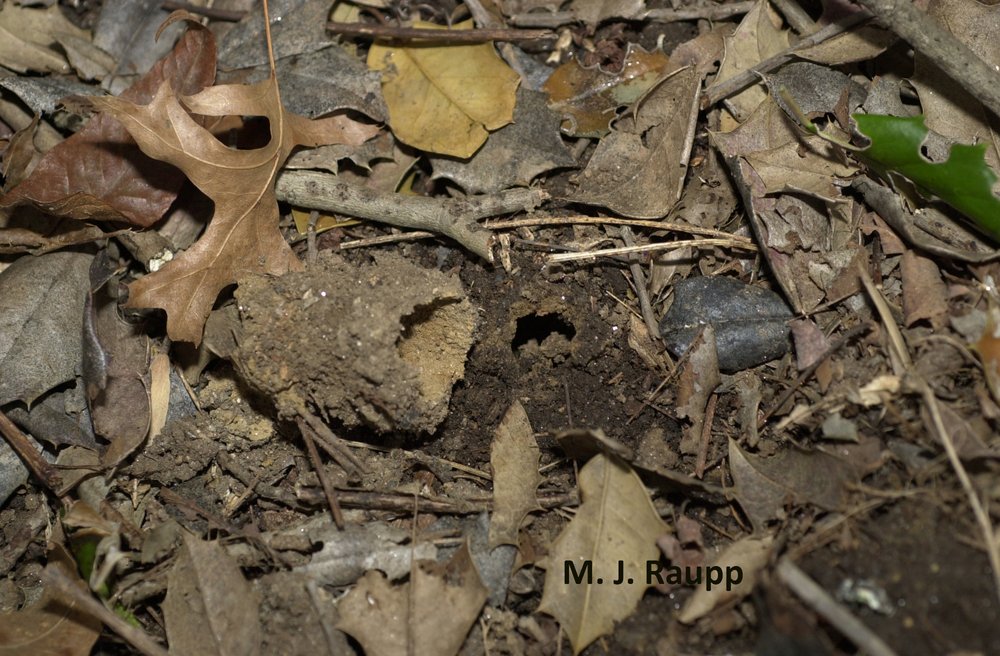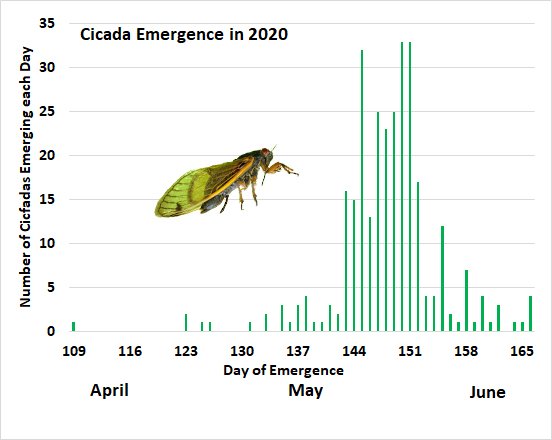Vanishing viburnums: vandalism by the Viburnum leaf beetle, Pyrrhalta viburni
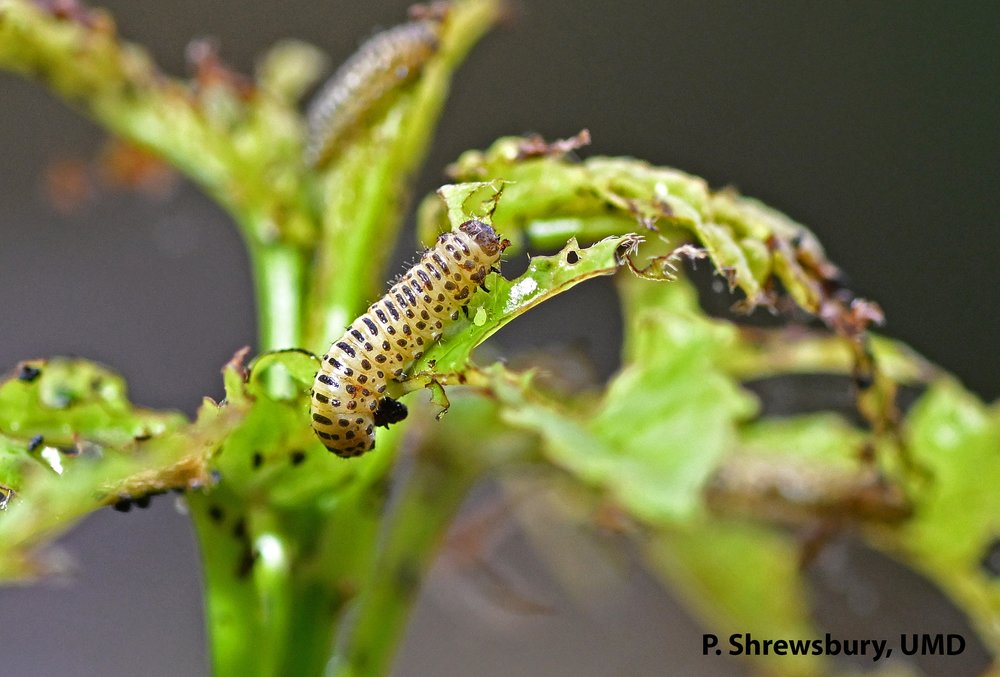
Larvae of viburnum leaf beetles can lay waste to beautiful viburnums.

Yikes! Shredded leaves are the hallmark of feeding by viburnum leaf beetle larvae.
Last week I encountered a planting of viburnums vandalized by yet another invasive species of insect. One of my favorite flowering shrubs, viburnum, had been stripped of 99.9 % of their leaves. My first thought was that some devastating weather event like drought or flood or some hideous disease had laid waste to these usually lovely shrubs. On closer inspection of the few leaves that remained, the culprit of this devastation was found – larvae of the viburnum leaf beetle. The saga of this invader from Europe begins in 1947 when it was first discovered in Canada. It took almost five decades to move south across the US border, when it was detected in New York in 1996. It has now spread to more than 20 states ranging from Maine to Florida and as far west as Washington state.
As adult beetles and their offspring feed on viburnum leaves, they create a type of injury called skeletonization, dining on tender leaf tissue between tough leave veins. So complete is their feasting that only a lacy memory of a leaf remains when they are done. These ghostly leaves soon wither, die, and drop, leaving naked stems behind. This season of misery began when eggs deposited last summer and autumn by female beetles hatched from tiny egg-niches lining small branches. In Maryland, eggs hatch near the time when Japanese camellia is in full bloom in early spring. Each female beetle can lay as many as 500 eggs. Little wonder why viburnum leaves vanish with so many hungry mouths at work. After completing three stages of larval development, larvae move to the soil and pupate. By June, adults emerge from the soil, clamber up stems, and begin to skeletonize nutritious viburnum leaves. In summer and autumn females chew small pits along branches and deposit five to eight eggs in each pit. This tiny nursery is then sealed with a cap of mother’s poop, chewed bark, and mucous. I have to wonder if young beetles undergo intense sessions of therapy to understand why their mother pooped on them. Well, this poopy mucous cap is thought to protect developing eggs from predators and help prevent moisture loss.
Oh no, what happened to these viburnums? They look beat. Environmental stress? Hideous disease? Let’s take a closer look at the few green leaves left standing. This is the larva of the nefarious viburnum leaf beetle, invader from Europe that vandalizes viburnums. Thousands of hungry larval mouths completely stripped these shrubs. Later this year adults emerge, mate, feast, and lay eggs, levying more misery on viburnums.

In June adult viburnum leaf beetles will emerge from the soil and move to leaves to mate, feed, and lay eggs.
What can be done to thwart these rascals? Clever research conducted by Cornell University revealed significant variation in susceptibility of different species of viburnums to attack by viburnum leaf beetle. Sadly, some of my favorite viburnums are on the “most susceptible” list, including our abundant native arrowwood viburnum, Viburnum dentatum. Two other species on the “most susceptible” list are Viburnum trilobum (previously known as Viburnum opulus var. trilobum), European cranberry bush viburnum, and Viburnum sargentii, Sargent viburnum. The University of Maryland lists these viburnums as resistant to viburnum leaf beetle: ‘Dawn’ viburnum, V. x bodnantense, Koreanspice viburnum, V. carlesii, David viburnum, V. davidii, Judd viburnum, V. x juddii, doublefile viburnum, V. plicatum, doublefile viburnum, V. plicatum f. tomentosum, leatherleaf viburnum, V. rhytidophyllum, tea viburnum, V. setigerum, and Siebold viburnum, V. sieboldii.
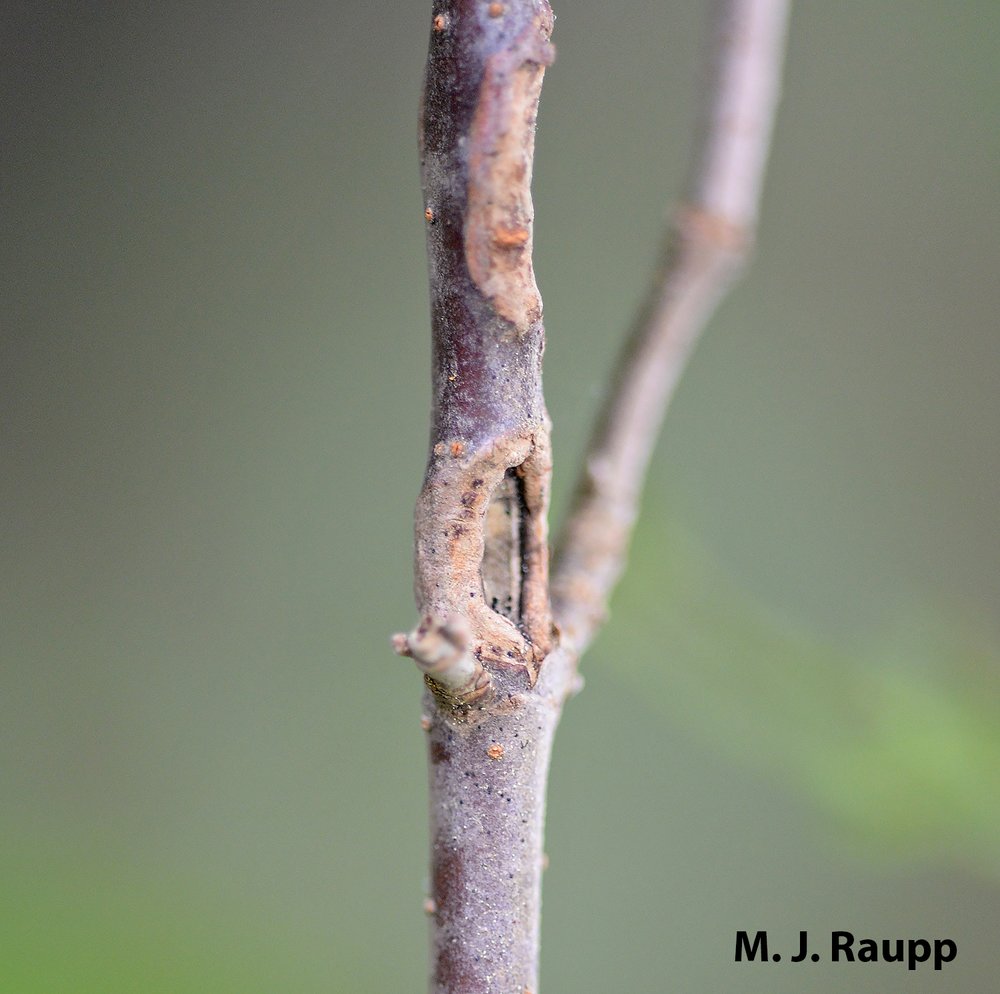
Viburnum branches bear the scars of egg nests made by viburnum leaf beetles.
If redesigning your landscape by planting resistant viburnums is not feasible, here are a couple additional things to consider. Sometime between the last killing frost of a season and the following spring, prune out branches bearing egg masses of viburnum leaf beetles and destroy them. Several species of predators attack and eat viburnum leaf beetles, including lacewing larvae, lady beetle larvae, and assassin bug larvae and adults. Including a rich diversity of flowering herbaceous and woody plants in your landscape will help support these beneficial insects that depend on floral resources and alternate prey to become resident in your landscape. If all else fails and as a last resort, you can annihilate infestations of beetles for at least a short period of time by applying insecticides labeled for beetle control. Because viburnums are so heavily visited by pollinators, systemic insecticides that may show up in nectar or pollen are not the best choice. Several products listed for use on organic vegetables listed by the Organic Materials Review Institute (OMRI) may be a better choice. Always read the label and follow instructions to the letter if you decide to go the insecticide route. Good luck saving your lovely viburnums.
Acknowledgements
Bug of the Week thanks Dr. Paula Shrewsbury for contributing images and comments to the episode. Bug of the Week is supported by the Department of Entomology at the University of Maryland and grants from USDA – NIFA. To learn more about viburnum leaf beetle and its management, please visit the following websites that were consulted for this episode:
https://extension.umd.edu/resource/viburnum-leaf-beetle/
https://www.youtube.com/watch?v=_BPp-9MljSc
https://www.canr.msu.edu/news/keep_your_eyes_open_for_the_viburnum_leaf_beetles
This post appeared first on Bug of the Week


